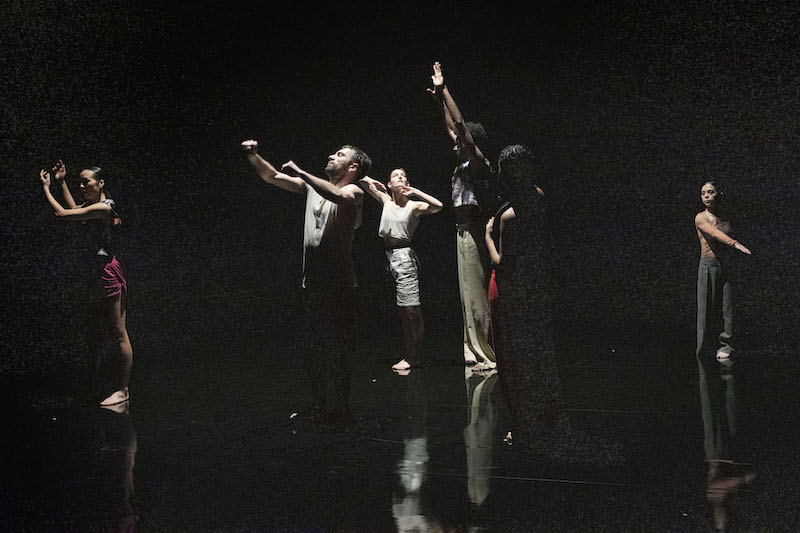Choreographer: Jan Martens
When you walk into a dance show, you’d most likely expect a visual spectacle. But Jan Martens’ piece VOICE NOISE is all about listening.
At the talk-back after last night’s performance, Martens expresses how the piece started with the music. Inspired by Anne Carson’s essay The Gender of Sound, the 90-minute dance show explores how women’s voices have historically been associated with “monstrosity, disorder, and death.” Using an eclectic mix of revolutionary songs by female singers, Martens and the remarkable cast present a mesmerising piece that is not always meant to be analytically unpacked—instead, it is a show best experienced by letting the sights and sounds wash over you.
“[The voice] is a part of the body,” performer Elisha Mercelina explains during the Q&A. The dancers achieve a remarkable integration of the two means of expression throughout the show. The piece opens not with movement, but with a soundscape. The dancers stand in front of microphones at the foot of the stage and gradually fill the cavernous Queen Elizabeth Hall with all sorts of strange, hypnotic vocals.
They move on to present a mix of solo and group movement numbers, performed with remarkable control, precision, lines, individuality and integration of the face and voice. The movement has a stunning, expressive quality to it. This is heightened by the fact that, in the words of performer Zora Westbroek, the show is different every night. Much of the show is improvised, so the performers have to listen to each other and the music intensely. The discoveries they make every night ensure an exciting, fresh experience for audience members.
But there’s a saying in the dance world, echoed by Martens, that the moments of silence and stillness are just as important as the moments of sound and movement. “There’s time to reflect, you’re not just experiencing the whole way through… Sound after the silence can have a bigger impact because of the silence before.”
On that note, the performers excel as an ensemble. But due to the improvisational nature of the piece, the audience does not get many opportunities to appreciate this. There is a segment in the middle set to Not Be Alright by Margaret Mary O’Hara in which the performers create incredible, intertwining formations. Their communication and connection as a group is evident, but this is one of few occasions where there’s a sense of unity in the choreography.
That said, the scarcity of these moments, while at times unsatisfying, also makes them that much sweeter when they do happen. That particular song fades out before the movement comes to a stop, producing one of many moments in the show where the audience becomes acutely aware of the sound—interestingly in a moment of silence. The lights fade, and the rhythmic beat of the ensemble stepping together becomes the focus rather than the movement itself. Listening in such moments is something we’re unaccustomed to in our day-to-day lives. But this piece, which is 90 minutes long with only 50 minutes of music, draws your attention to just how much there is to discover in those spaces.
Audiences should keep in mind that Martens drew inspiration for this piece from a list of the “100 weirdest albums.” If one is looking for a traditional dance show with a clear story arc, they may be better off somewhere else. But if you have even a little bit of curiosity about the expansiveness of what dance can be, if you’re ready to explore beyond the music and movement served to us by algorithms, VOICE NOISE is well worth the trip.
Runs until 16 October 2025
The Reviews Hub Star Rating
80%
Experimental and mesmerising
